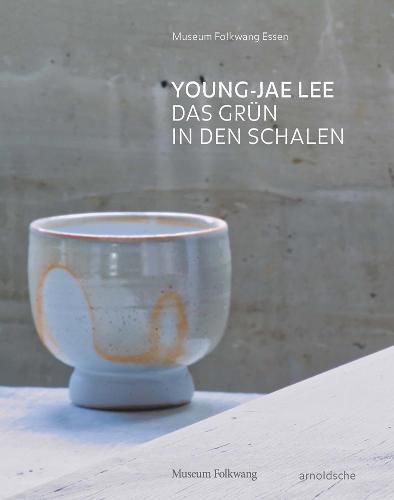Readings Newsletter
Become a Readings Member to make your shopping experience even easier.
Sign in or sign up for free!
You’re not far away from qualifying for FREE standard shipping within Australia
You’ve qualified for FREE standard shipping within Australia
The cart is loading…






A select presentation of brilliantly glazed bowls provides an overview of Young-Jae Lee’s form and colour schemes, presented in German.
Since 2008, Young-Jae Lee (b. 1951), head of the ceramic workshop Margaretenhoehe in Essen, has been creating Spinatschalen (spinach bowls) - bulbous vessels atop simple foot rings - whose multifarious glazes lend the striking deep bowls their special aesthetic appeal.
Behind the purism of Young-Jae Lee’s bowls lies a long history, which harks back, via Japanese teabowls, to Korean vessels of the Joseon Dynasty (1392-1910), the ceramicist’s style is very much defined by this period’s Buncheong era (to approx. 1592), in which its ceramicists represented a renewal, a departure from an outdated ideal of beauty, one in which they renounced the elite in favour of the everyday.
One could say that Young-Jae Lee brings the tradition of ideal aesthetic pairings so characteristic of the Joseon era into the present - the simple and noble, the emotional and restrained, and the diversity in the similar, as well as the dis-mantling of simple categories of value. In doing so she breaks away from the narrow definition of the teabowl: in Japan there was a wide variety of bowls, manufactured in Korea, that had in fact been formed for all kinds of purposes, including tea - perhaps even for spinach. Yet an aesthetic leaning towards Japan long defined the European gaze on East Asian ceramics and distracted from their multifarious origins.
This publication unlocks a piece of ceramic history. It negotiates the historical and cultural relationships between Japan and Korea, where the teabowl was created, and portrays the German reception of East Asian ceramics at the dawn of the twentieth century by means of examples from Museum Folkwang.
$9.00 standard shipping within Australia
FREE standard shipping within Australia for orders over $100.00
Express & International shipping calculated at checkout
A select presentation of brilliantly glazed bowls provides an overview of Young-Jae Lee’s form and colour schemes, presented in German.
Since 2008, Young-Jae Lee (b. 1951), head of the ceramic workshop Margaretenhoehe in Essen, has been creating Spinatschalen (spinach bowls) - bulbous vessels atop simple foot rings - whose multifarious glazes lend the striking deep bowls their special aesthetic appeal.
Behind the purism of Young-Jae Lee’s bowls lies a long history, which harks back, via Japanese teabowls, to Korean vessels of the Joseon Dynasty (1392-1910), the ceramicist’s style is very much defined by this period’s Buncheong era (to approx. 1592), in which its ceramicists represented a renewal, a departure from an outdated ideal of beauty, one in which they renounced the elite in favour of the everyday.
One could say that Young-Jae Lee brings the tradition of ideal aesthetic pairings so characteristic of the Joseon era into the present - the simple and noble, the emotional and restrained, and the diversity in the similar, as well as the dis-mantling of simple categories of value. In doing so she breaks away from the narrow definition of the teabowl: in Japan there was a wide variety of bowls, manufactured in Korea, that had in fact been formed for all kinds of purposes, including tea - perhaps even for spinach. Yet an aesthetic leaning towards Japan long defined the European gaze on East Asian ceramics and distracted from their multifarious origins.
This publication unlocks a piece of ceramic history. It negotiates the historical and cultural relationships between Japan and Korea, where the teabowl was created, and portrays the German reception of East Asian ceramics at the dawn of the twentieth century by means of examples from Museum Folkwang.